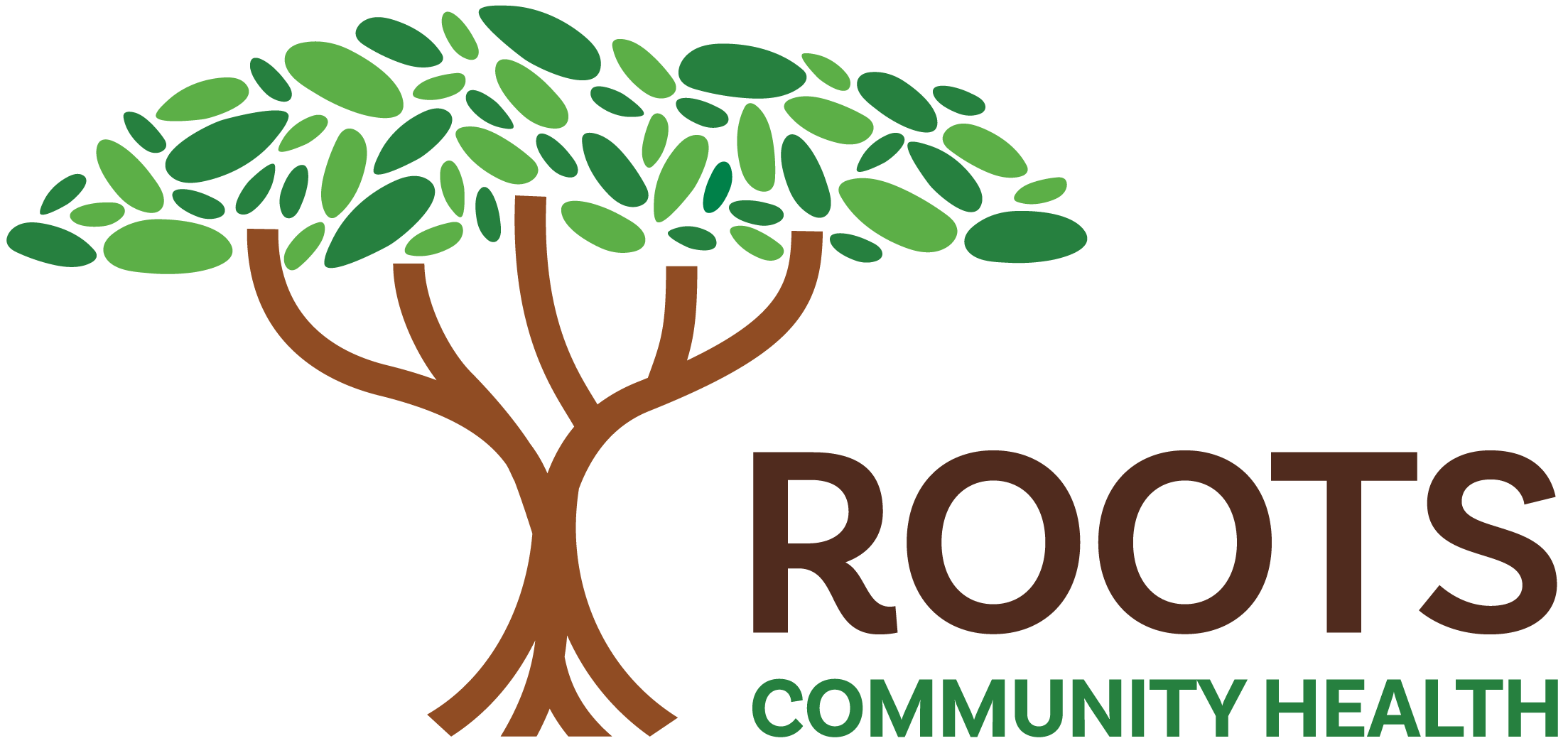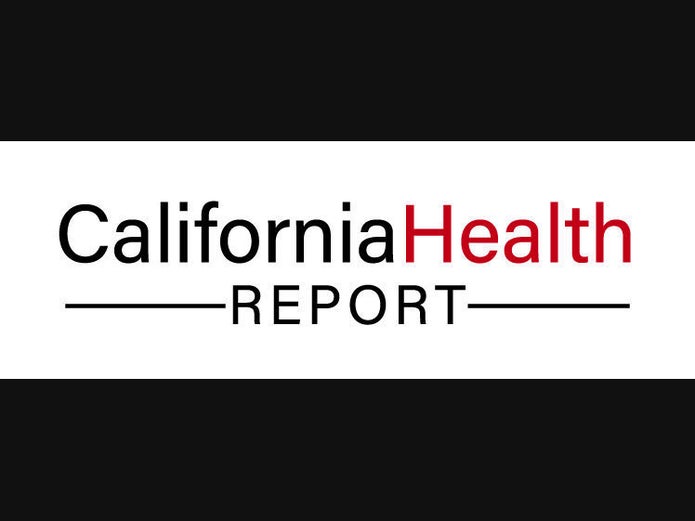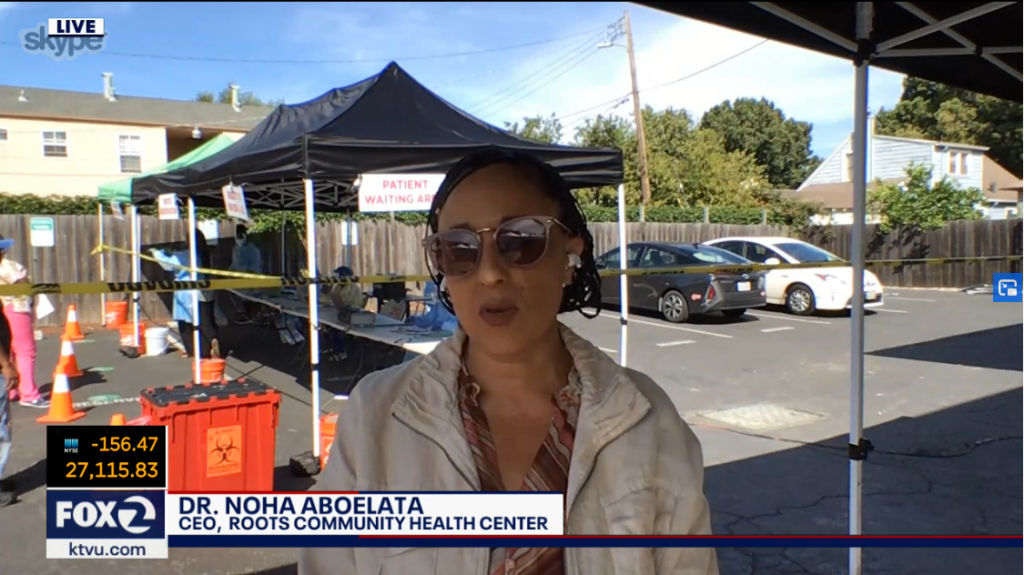Analysis: We Can Build An Equitable Health Workforce. Here’s How
Despite rhetoric that we’re in this pandemic together, data clearly shows that COVID-19 is affecting some communities more than others.

Feb 3, 2021
“It’s huge, it’s like a bombshell … I’ve talked to critical care docs and pulmonary docs who did not know this.”
These are the words of Dr. Noha Aboelata, a physician and the CEO of Roots Community Health in Oakland which primarily serves Black patients. Aboelata is speaking about a design flaw in many pulse oximeters. Pulse oximeters are a common medical device used to measure oxygen levels — such as in COVID-19 patients. Research shows that oximeters often overestimate oxygen saturation in darker-skinned patients, a flaw that can prove fatal when providers are deciding whether or not to hospitalize a patient or provide them with additional oxygen.
Researchers at UCSF first identified the flaw in a 2005 study, and then again in 2007.
But, in an example of systemic racism, the research was largely ignored until deep into the COVID-19 pandemic. Some health experts, including Aboelata, believe the design flaw in pulse oximeters has contributed to higher rates of Black and brown patients dying from COVID-19.
“Now I really believe this is at least part of it,” Aboelata said in a January interview.
This technological bias is just one example of how systemic racism can permeate health care systems and lead to potentially fatal outcomes for people of color.
Despite rhetoric that we’re in this pandemic together, data clearly shows that COVID-19 is affecting some communities more than others. Research from the Brookings institute shows that Black and Latinx Californians are dying from COVID-19 at disproportionately high rates compared to white residents. These gaps persist even when adjusting for age to account for the fact that Black and Latinx populations are generally younger.
Multiple factors may explain why Black people in particular are dying of COVID-related complications at disproportionately high rates. Black communities face adverse structural conditions that lead to poorer health outcomes. For example, Blacks are more likely to reside in neighborhoods that have faced decades of disinvestment and economic hardship due to redlining. These neighborhoods tend to lack healthy eating options, grocery stores, public safety investments and economic opportunities. These structural factors are compounded by the fact that Black workers are more likely to hold jobs classified as “essential,” putting them at higher risk of contracting COVID-19.
The mixture of these factors has deadly repercussions: For every 1 white person between the ages of 35 and 44 who has died of COVID-19, 10 Black people have died.
In addition to structural inequities, Black and Latinx communities are underrepresented in the health workforce. Health care providers who don’t understand their patients’ culture or race can unintentionally miss signs of serious conditions or fail to offer treatments that may be necessary. These biases can have tragic outcomes.
In California, the disparities in representation are stark. By 2030, California’s population is projected to be roughly 45.7 percent Latinx, but only about 6 percent of active physicians are currently Latinx.
The impact of health provider shortages and inequities disproportionately falls on Black, Latinx and Native American communities who are also more likely to live in areas with a shortage of health providers. By 2030, California is expected to have a shortfall of roughly 4,100 primary care physicians. These shortages worsen health disparities for historically marginalized communities.
California’s leaders must build a diverse and culturally competent health workforce. This starts with making investments in the communities that are most vulnerable and medically underserved. Policymakers should work to expand health career pipeline programs for underrepresented students.
Programs such as Health Career Connection have driven talented students of color into health care and public health careers for years. Full disclosure: I’m an alum. The program provided me with invaluable experience in the public health field and opened doors for me to pursue a career in health policy.
While in the program, I learned about public health education and building a network. I also interned with Youth UpRising in East Oakland where I led a group of youth in a Participatory Action Research project. I often point to the network and relationships I built during my time in the Health Career Connection as a major stepping stone on the pathway to a successful career in health equity.
Another model is the Alameda County Health Pathway Partnership, a regional consortium of health pipeline programs in the East Bay Area, which leads over 1,000 underrepresented students each year, into long-term health careers.
Legislators at the county and state level should work to replicate the success of these programs and scale them to meet the needs of all California students. And state legislators should back a bill from Sen. Melissa Hurtado (D, Fresno). SB 1110 would require the state to establish a multi-year pilot program called the California Medicine Scholars Program in four regions of the state. The program would provide a path for historically underrepresented students at California’s community colleges to attend medical schools.
Our leaders must also work to prevent systemic bias in medical trials, to yield racially equitable outcomes. We can’t repeat what happened — what is still happening — with pulse oximeters.
Medical stakeholders need to build trust in the Black community in particular given general skepticism following the horrors of the Tuskegee Experiment. Black patients are reluctant to participate in clinical trials, an issue was reflected during COVID-19 vaccine trial outreach. Participation of a diverse array of communities is crucial to ensuring that health treatments are efficacious in the general population.
Aboelata, who has watched her community suffer disproportionately from COVID-19, wants action.
“From a regulatory perspective, there must be something that can be done,” Aboelata said.
For her Black and brown patients — and others across the country — it could be lifesaving.
Denzel Tongue writes a column for the California Health Report about the intersection of racial justice, public policy and health equity. He is a master of public policy candidate at The Goldman School of Public Policy and a California Initiative for Health Equity Fellow.
California Health Report focuses on social and environmental justice issues and how they impact the state’s most vulnerable people. Their work has spurred legislative action, and changed conversations–in Sacramento, at community meetings and around dinner tables.


